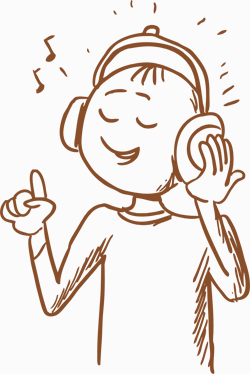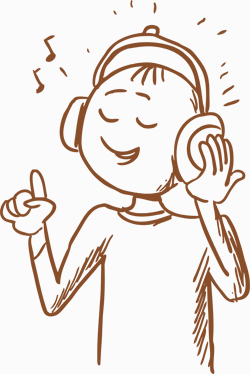 You know that feeling when you hear a mind-blowing song: that bittersweet mix of awe and… dejection?
You know that feeling when you hear a mind-blowing song: that bittersweet mix of awe and… dejection?
The immediate listening experience can be immensely rewarding, but to hear a composition which takes advantage of music theory to a greater degree than we’re capable of can also be a truly humbling experience.
At times it can make the road ahead seem so long and arduous that we forget the musicians we’re listening to still put on great records themselves and feel much the same thing.
There are essentially two responses an aspiring musician can choose between when faced with this situation. Either we look up to them, or we assume they’d look down on us. The first is a path of infinite inspiration, but it seems to be the latter option that is most often our default reaction.
Most of us have doubts we could ever reach such great heights, which can considerably limit our growth as artists. The humbled musician begins to see the worlds of music theory, ear training, and instrumental skill as a giant web of untranslatable complexity. We start thinking about notes on a staff in terms of mathematical equations, and become intimidated by our own conceptions of what is, in reality, nowhere near as complicated as we’ve convinced ourselves.
The first type of response, a positive one, is much more difficult to cultivate. There are however methods that can help optimize this passive listening experience, and ideally turn that otherwise fleeting inspiration into a moment as educational as any formal theory class. Well, at least as valuable as the classes I’ve taken (which, to be fair, have not set the bar very high!)
What follows are a couple of tricks I use on a daily basis. They’ll either revolutionize the way you think about training your ear; or they’ll seem totally banal and obvious! Such is the nature of any discussion about harnessing the power of inspiration – ultimately I can only recommend that you read them not as a specific guide for “how to train your ear” but as some suggestions offered by a fellow musician to help you find your own way.
Suggestion #1: Never Start, Never Stop
This suggestion might seem a little counterintuitive at first, especially if you’ve developed the admirable habit of setting aside time in your day for ear training practice. Suppose, for instance, that you designate an hour of each day for exercises in ear training. The time you spend with it will undoubtedly be helpful, but this approach contributes to a common misconception: that when you’re “off”, you’re not training. We solidify this idea by chuggin’ beers at concerts with friends, putting music on in the background throughout the day while distracted by other things, and by letting the moments of inspiration which arise in such times of non-practice wash over us and disappear.
You can (and should) still set a dedicated practice time, but whenever you hear something that really strikes you, try to always stop and take at least a quick look at how the musician in question achieved whatever it was that stood out to you.
Even if that means just making a quick note on your phone to return to the song when you have more time. A ten minute analysis of the melodies and chord progressions at work should give you a thread to follow in working towards emulating the sound. And the more little stylistic influences you pick up along the way, the more freedom you’ll have in your own composition. Not to mention that you’ll be familiarizing your ear with the styles you want to create in a much more concrete way than if you were just passively listening.

Suggestion #2: Your Best Tools Come From the Music You Love
This one’s pretty straightforward. Next time you stumble on an interval or chord that you have trouble identifying, instead of using the ol’ theory teacher’s go-to (the antiquated “NBC” jingle or “Here Comes the Bride” for example), find an example from a song that’s been bouncing around in your head since high school. This will help you identify the chords/intervals much more readily, and will also act as a built-in example of how to apply said musical material in your own creations.
Note that this works inversely, too: as you improve, it will be easier to look at your favorite stuff and figure out specifically why it’s your favorite. If you can fill your musical toolbox with a mix of all your favorite musical moments, you’ll be well on the way to developing a style that’s both unique and ideally suited to your own taste. Needless to say, this can also make jamming and composing an infinitely more fulfilling process.
See what I mean? It’s not like you couldn’t come up with methods like these on your own. But every great musician has unique ways of doing what they do, and most of them developed their approaches by looking at the music of their peers, figuring out how it works, and learning useful theory abstractions from there.
Hang on for Part Two of this article to get some more ideas on capitalising on inspiration. In the mean time: toss on an old favorite and try to figure out what makes it tick.







